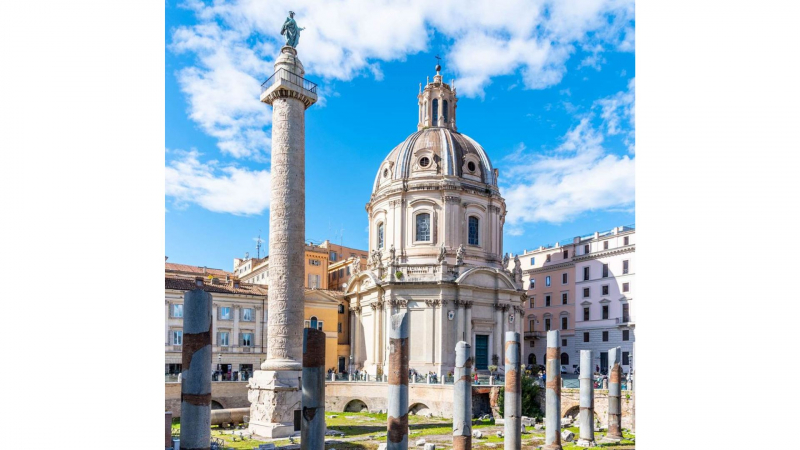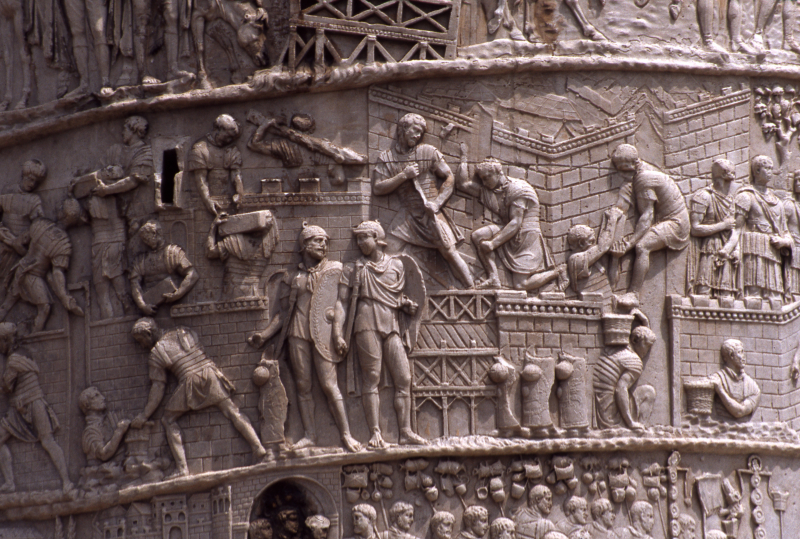Trajan’s Column
One of the most eagerly anticipated successes of the Roman era was Emperor Trajan's two-year victory over the Dacians. Following this victory, a triumphal victory column was built, and it quickly rose to prominence. The column, which is situated in Trajan's Forum to the north of the Roman Forum, was built between 106 and 113 CE under Apollodorus of Damascus' direction. One of the most well-known monuments features about 155 different scenes and over 2662 exquisitely made figures. Almost every scene tells a story on its own, from Trajan's remarks to the Roman legion marching to military feats.
This column has a height of 98 feet overall, plus an additional 17 feet of a massive pedestal with 185 spiral-shaped steps. The figure of Trajan is positioned on the highest point of the column, which also houses the observation platform. This column's design, architecture, and engineering prowess served as an example for many others that followed, all of which employed the same format. The most well-known columns that were influenced by this are the Antoninus Pius Column and the Column of Marcus Aurelius.
A Greek room and a Latin chamber, which faced one another and had walls adorned with niches and wooden bookcases for scrolls, originally surrounded Trajan's Column. Trajan's commentary on the Roman-Dacian Wars, the Dacica, which most academics assume was intended to be mirrored in the spiraling, sculpted narrative pattern of Trajan's Column, was probably found in the Latin chamber.












